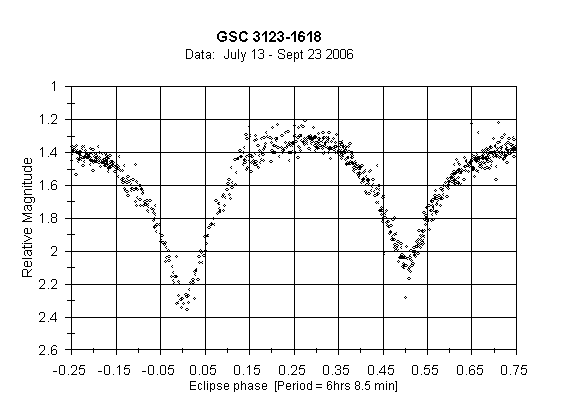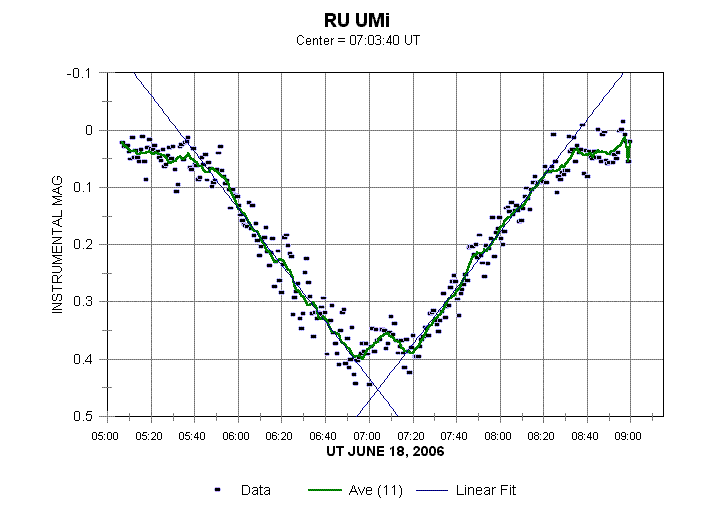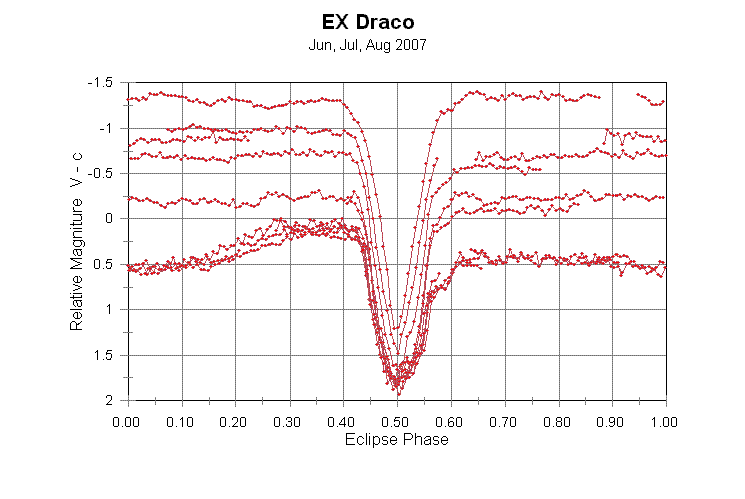Elgin Observatory
HOME
Data obtained with CB245 CCD camera unfiltered,
on an 8" f/8 Newtonian telescope.
A series images is taken over an extended period of several hours.
The images are then photometrically measured using AIP4win.
AIP automatically subtracts the Variable's [V] apparent
magnitude from the magnitude of the Comparison star [C].
Plotting the results shows the eclipse progress.
(Note, the larger the magnitude, the dimmer the star.)
The magnitude of a third star, Check [K], is correspondingly
compared to the Comparison star to verify a constant magnitude for the
Comparison star.
GSC 3123-1618, Eclipsing Binary
Variable; July - September 2006

Here is data from a series of images taken over a period of 10 weeks.
The data are plotted relative to the phase (x-axis) of the eclipse,
giving a population of data points along the light curve.
The data plot shows the full eclipse cycle.
There is a major minima, when the dimmer star passes in front of the brighter star;
and a minor minima, when the dimmer star passes behind the brighter star.

RU Ursa Major June 18, 2006
EX Draco June 26, thru August 25, 2007

EX Draco is a long term variable and an eclipsing variable.
The data here is from a series of images taken over a
period of 8 weeks and plotted relative to the phase of the binary eclipse.
The data plot shows the full eclipse cycle, but unlike
GSC 3123-1618 (above) there is no secondary eclipse.
Note that the baseline brightness of the star changes dramatically
over the period for which these data points were obtained.
HOME